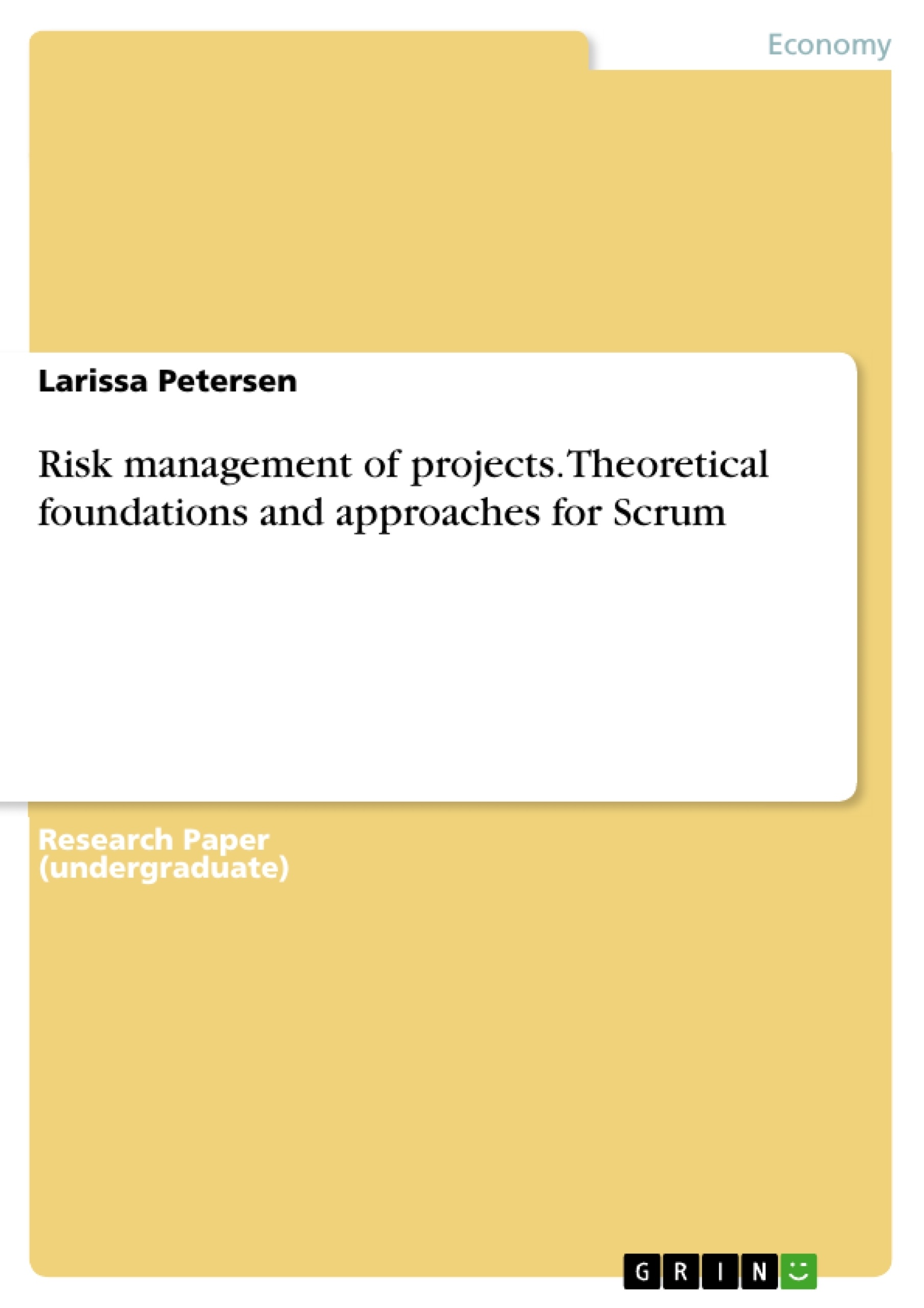As a result of global networking, software development projects are carried out in cooperation with foreign specialists. This increases efficiency, but also increases the probability of personnel, cultural and legal risks. The software industry is highly dynamic and the market situation is changing due to the rapid development of new technologies.
To complete projects efficiently, companies rely on agile development procedures such as Scrum. Although Scrum is not part of the project management procedures, it takes over some points from classic project management: work packages must be prioritized, estimated and planned for the individual sprints. Scrum has few risk management approaches, which means that gaps can be identified, e.g. risks due to missing fixed prices, planning reliability. Thus, software vendors are in the dilemma of having to balance the pace of product development and product quality while considering the risks. This paper provides an exemplary elaboration on how Scrum can be expanded with little time and cost input through risk management.
Inhaltsverzeichnis (Table of Contents)
- 1. INTRODUCTION
- 2. THEORETICAL BASICS
- 2.1 Definition of "risk" and "risk management"
- 2.2 Project Risk Management Process
- 2.3 Categorization of risks
- 2.4 Risk management in project procedure models
- 3. THE RISK MANAGEMENT APPROACHES FOR SCRUM
- 3.1 Current point of view and problem description
- 3.2 Practical relevance
- 3.3 Methods and tools
- 3.3.1 Risk identification tools
- 3.3.2 Risk assessment tools
- 3.3.3 Distribution of roles
- 3.3.4 Documentation
- 3.4 Implementation phase
- 4. CONCLUSION AND OUTLOOK
Zielsetzung und Themenschwerpunkte (Objectives and Key Themes)
This thesis aims to examine how risk management approaches can be integrated into a Scrum-based project, using a case study of a medium-sized international company. The work investigates the challenges of managing risks in software development projects, particularly in a globalized context where collaboration with foreign specialists is common.- Risk management in agile software development methodologies like Scrum
- The impact of globalization on project risks
- Practical implementation of risk management approaches within a Scrum framework
- Balancing product development speed with quality and risk considerations
- The role of risk assessment and mitigation in agile project environments
Zusammenfassung der Kapitel (Chapter Summaries)
- Chapter 1: Introduction This chapter introduces the topic of integrating risk management into Scrum-based projects and outlines the problem statement. It highlights the challenges posed by globalization, particularly in software development, and the need for effective risk management strategies within agile methodologies.
- Chapter 2: Theoretical Basics This chapter provides a foundational understanding of risk management, including definitions of "risk" and "risk management," the project risk management process, and a categorization of risks. It also discusses the role of risk management in project procedure models.
- Chapter 3: The Risk Management Approaches for Scrum This chapter delves into the practical implementation of risk management approaches within a Scrum framework. It explores current perspectives and challenges, as well as methods and tools for risk identification, assessment, role distribution, and documentation. The chapter also outlines the implementation phase of risk management in a Scrum project.
Schlüsselwörter (Keywords)
The main keywords and focus topics of this text include risk management, Scrum, agile software development, globalization, project risks, risk assessment, risk mitigation, case study, international collaboration, and software development.- Quote paper
- Larissa Petersen (Author), 2017, Risk management of projects. Theoretical foundations and approaches for Scrum, Munich, GRIN Verlag, https://www.grin.com/document/954671




